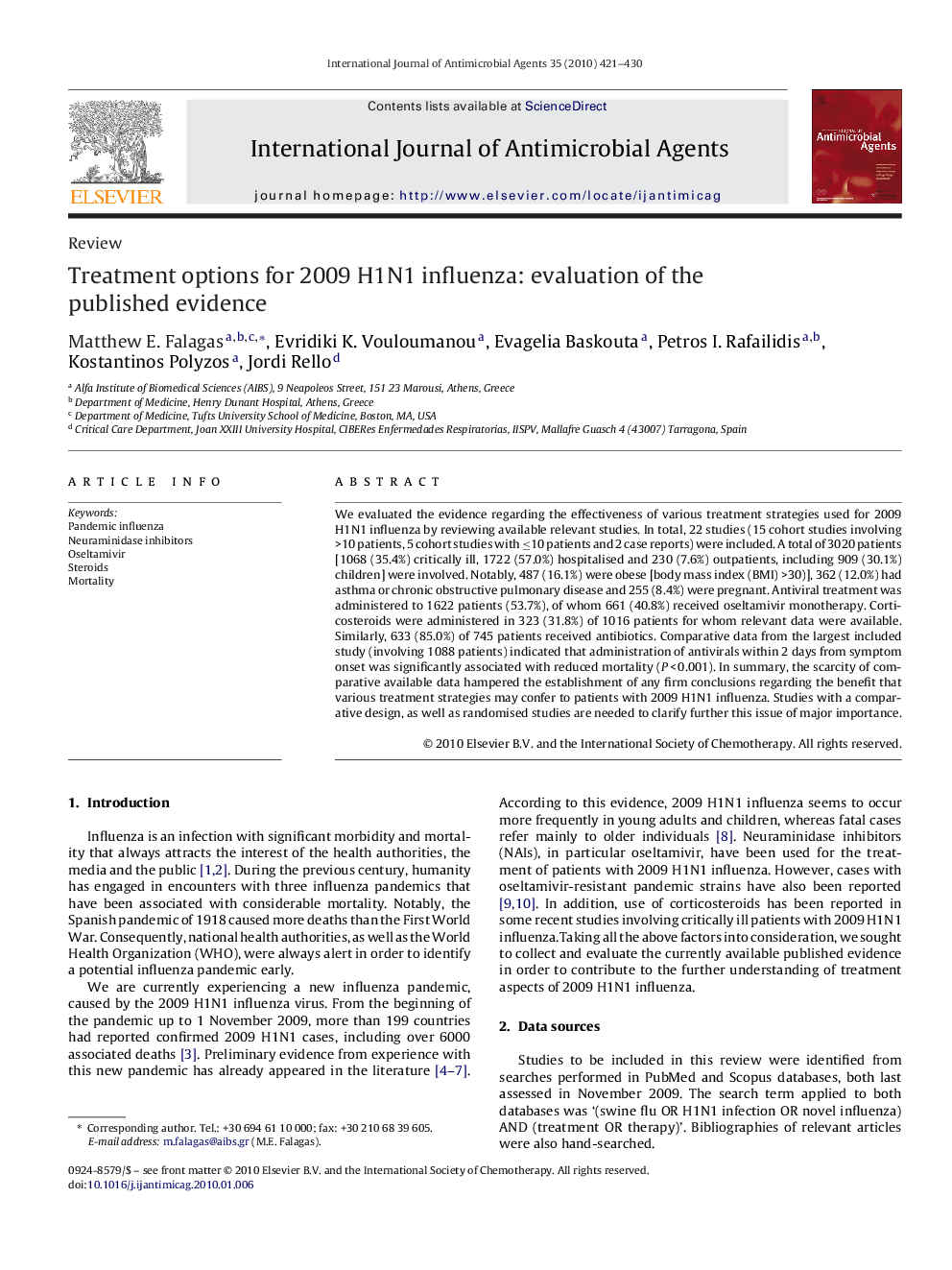| Article ID | Journal | Published Year | Pages | File Type |
|---|---|---|---|---|
| 3359798 | International Journal of Antimicrobial Agents | 2010 | 10 Pages |
We evaluated the evidence regarding the effectiveness of various treatment strategies used for 2009 H1N1 influenza by reviewing available relevant studies. In total, 22 studies (15 cohort studies involving >10 patients, 5 cohort studies with ≤10 patients and 2 case reports) were included. A total of 3020 patients [1068 (35.4%) critically ill, 1722 (57.0%) hospitalised and 230 (7.6%) outpatients, including 909 (30.1%) children] were involved. Notably, 487 (16.1%) were obese [body mass index (BMI) >30)], 362 (12.0%) had asthma or chronic obstructive pulmonary disease and 255 (8.4%) were pregnant. Antiviral treatment was administered to 1622 patients (53.7%), of whom 661 (40.8%) received oseltamivir monotherapy. Corticosteroids were administered in 323 (31.8%) of 1016 patients for whom relevant data were available. Similarly, 633 (85.0%) of 745 patients received antibiotics. Comparative data from the largest included study (involving 1088 patients) indicated that administration of antivirals within 2 days from symptom onset was significantly associated with reduced mortality (P < 0.001). In summary, the scarcity of comparative available data hampered the establishment of any firm conclusions regarding the benefit that various treatment strategies may confer to patients with 2009 H1N1 influenza. Studies with a comparative design, as well as randomised studies are needed to clarify further this issue of major importance.
